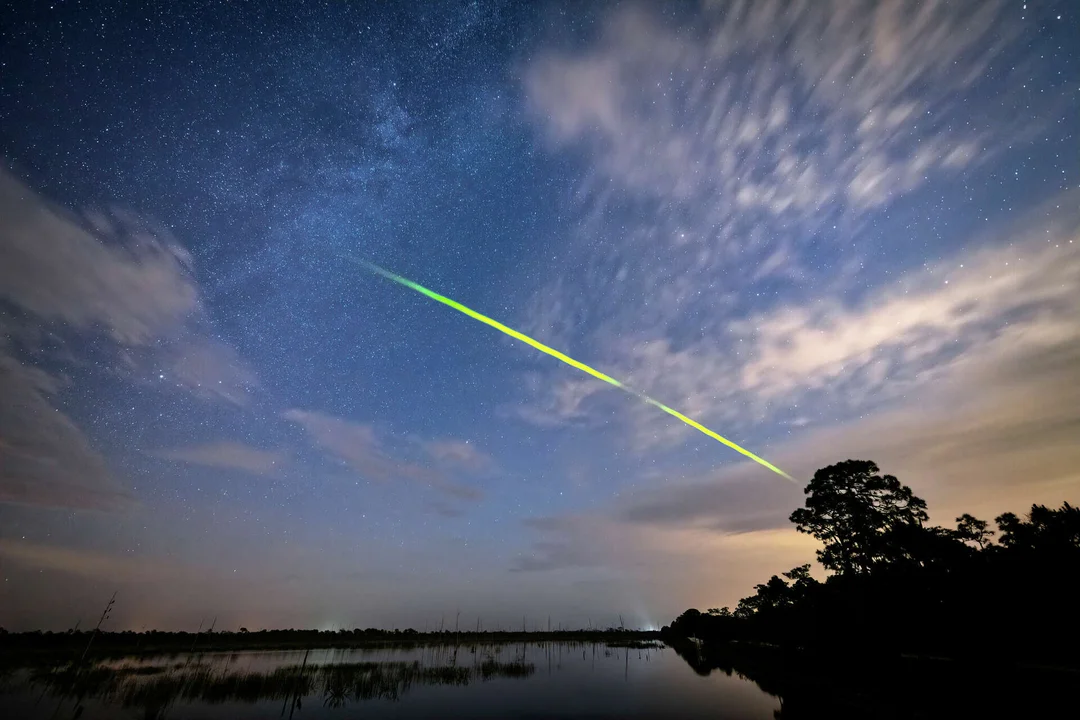
Halley’s Comet Debris Creates Stunning Eta Aquarid Meteor Shower: When and Where to Watch
Get ready for a celestial spectacle! The annual Eta Aquarid meteor shower, caused by debris from the famed Halley's Comet, is currently active and offering skywatchers a chance to witness fiery streaks lighting up the night. While the shower peaked earlier this month, opportunities to spot these mesmerizing meteors remain until May 21st.
Why is this meteor shower so special? The Eta Aquarids are unique because they originate from the trail of dust and ice left behind by Halley's Comet, a comet that only visits the inner solar system every 76 years. According to NASA, Earth passes through this debris field annually, creating the meteor shower we observe.
What to Expect: Known for their speed, Eta Aquarid meteors zip across the sky at approximately 40.7 miles per second. NASA researchers note that these swift meteors can sometimes leave glowing 'trains' in their wake, visible for several seconds or even minutes. During the peak, under ideal conditions, observers might see up to 50 meteors per hour. However, as Bill Cooke, who leads NASA's Meteoroid Environments Office, points out, moonlight can wash out fainter meteors, potentially reducing visibility to 10-15 meteors per hour.

When and Where to Watch: While the shower's peak occurred between May 5th and 6th, the Eta Aquarids remain active until May 21st. NASA recommends heading out around 2 a.m. local time to catch the meteors at their best. The moon is expected to set around 3 a.m., providing darker skies until dawn. The Southern Hemisphere offers a more favorable viewing experience due to its better view of the radiant – the point in the sky from which the meteors appear to originate. In Texas, about 10 meteors an hour are expected.
Tips for Optimal Viewing:
- Find a location far from city and street lights.
- Lie flat on your back with your feet facing east, taking in as much of the sky as possible.
- Allow your eyes about 30 minutes to adjust to the darkness.
- Consider bringing a blanket or sleeping bag, as pre-dawn temperatures can be cool.
The Science Behind the Spectacle: Meteors are the result of comet particles and asteroid fragments. As comets orbit the sun, they leave behind a "dusty trail." When Earth passes through these trails, the debris collides with our atmosphere and disintegrates, creating the fiery streaks we call meteors. The Eta Aquarids stand out because they come from material shed by Halley's Comet each time it nears the sun. Witnessing these meteors connects us to decades of space and research.
So, will you be venturing out to witness this annual celestial display? Share your viewing experiences and observations in the comments below!
Related issues news
When is the ETA Aquarid meteor shower?
The Eta Aquarid showers are visible around the globe and occur between mid-April and late May. Stargazers can expect to see 10 to 15 meteors per hour.
How to see Halley's comet tonight?
To best view the Eta Aquarids, find an area well away from city lights or street lights. On a sleeping bag, blanket or lawn chair, lie flat on your back with your feet facing east and look up, taking in as much of the sky as possible, according to NASA.